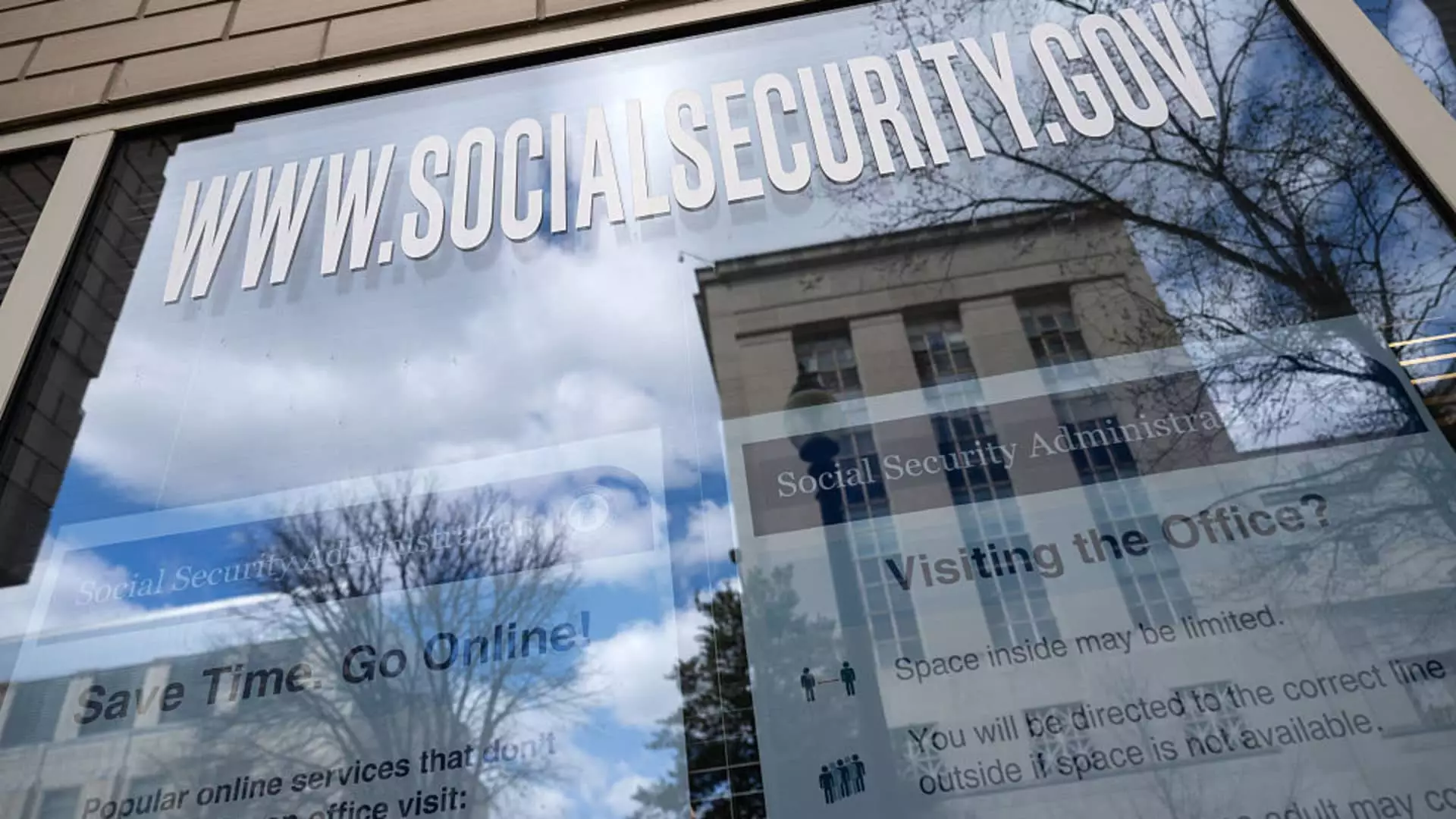The annual report from the Social Security Board of Trustees delivers a sobering message that has become maddeningly predictable: the trust fund backing Social Security will face depletion as early as 2033. This bleak forecast, a repeat of last year’s projection, is not merely an economic statistic; it symbolizes a growing crisis in the American social safety net. As the nation grapples with an aging population and rising longevity, these numbers illuminate a fundamental truth: what was once taken for granted, the financial stability of Social Security, is in jeopardy, and the political will to address it appears alarmingly weak.
In 2033, the report estimates that the program can only provide 77% of promised benefits. The implications of this revelation are profound. For millions of Americans, particularly those at or nearing retirement age, this is not a mere statistic but a looming financial disaster that could determine their quality of life in old age. The urgency for Congress to act cannot be overstated, yet partisan divisions continue to stifle meaningful dialogue.
Dissecting the Trust Fund Dynamics
The Social Security system comprises two primary trust funds: the Old-Age and Survivors Insurance Trust Fund and the Disability Insurance Trust Fund. Current law prohibits these funds from merging, despite previous congressional authorizations for fund shifting during periods of shortfall. Theoretically, the Disability Insurance fund showcases robust endurance, promising benefits through at least 2099. However, the combined trust funds’ impending inadequacy paints a more troubling picture.
Even with administrative revenues sustained via payroll taxes—6.2% from workers and an employer match—it’s clear this model is rapidly becoming outdated. There is a systemic flaw in how we fund these programs, revealing that the contribution rates have stagnated while beneficiaries continue to grow, raising the pressing question: how long can the current funding structure withstand the test of time?
Impacts of Legislative Decisions
A notable variable in the latest report is the influence of the recently enacted Social Security Fairness Act. While intended to enhance benefits for certain public pensioners, it may paradoxically curtail the program’s longevity. It’s perplexing that such potentially destabilizing legislation seems to slide into enactment without thorough scrutiny of its long-term financial implications.
Additionally, any semblance of strategic thinking seems absent regarding the integration of new tax proposals and tariffs that could undermine Social Security’s financing. The report’s reliance on assumptions from late last year suggests a disconnect between current events and the dire projections on which our retirement security stands. As Kathleen Romig from the Center on Budget and Policy Priorities aptly highlighted, these elements pose “serious threats” to the already tenuous financing of Social Security.
The Call from Advocacy Groups and Public Sentiment
Advocacy organizations, most notably AARP, echo a chorus calling for congressional intervention to safeguard Social Security. Their concerns underscore a crucial truth that the welfare of many Americans hangs in the balance, and the pressure on lawmakers is intensifying. More than mere policy, this is about the lives of approximately 70 million beneficiaries today and the future generations who have earned their right to a secure retirement.
The public sentiment is overwhelmingly against drastic measures like benefit cuts. A recent survey reveals that 85% of Americans prefer raising taxes over diminishing the earned benefits. This striking consensus across diverse demographics challenges the narrative often paraded by fiscal conservatives who suggest that slashing benefits is the only viable solution to the impending crisis. It’s essential that this will of the people translates into actionable policy rather than being drowned out in the noise of political maneuvering.
Potential Pathways: Solutions on the Horizon
The survey indicates strong support for reform measures such as removing the payroll tax cap for earnings over $400,000, as well as gradually increasing the payroll tax rate from 6.2% to 7.2%. These pathways are not merely hypothetical; they represent a burgeoning consensus on what needs to be done to preserve what is arguably one of America’s most cherished programs.
Instead of succumbing to fear-driven debate about raising taxes or cutting benefits, lawmakers must embrace the opportunity to initiate a forward-thinking solution that balances the urgencies of today’s economic landscape with the needs of future beneficiaries. The message is clear: the stability of Social Security not only shapes individual lives but also signifies a commitment to fostering economic security for all. If action is not taken, we invite a calamity that could fracture the fundamental promise of social insurance.

